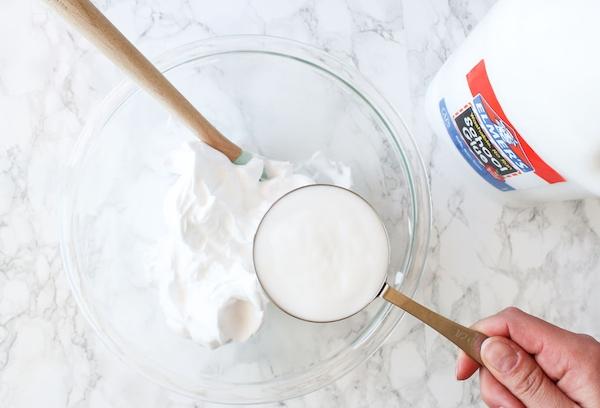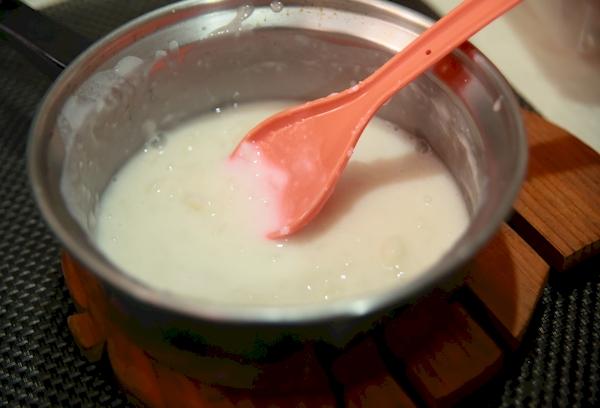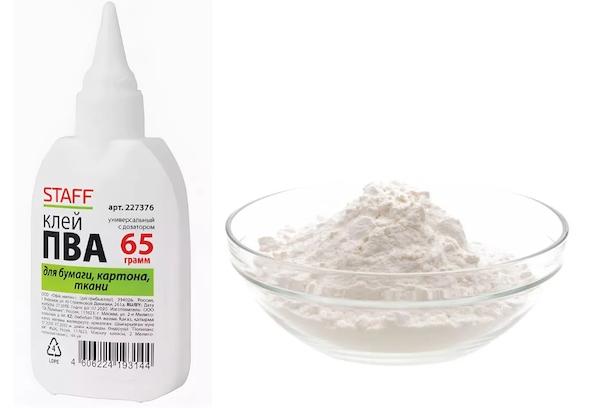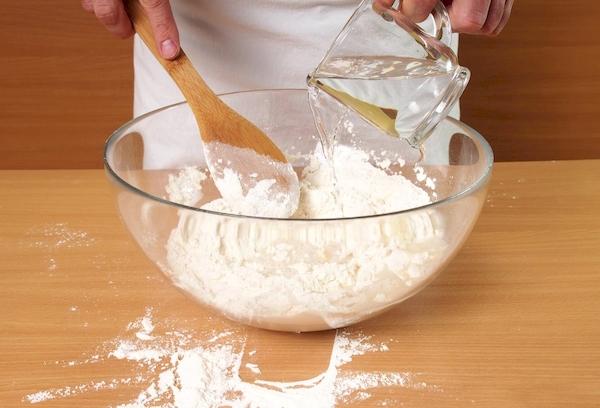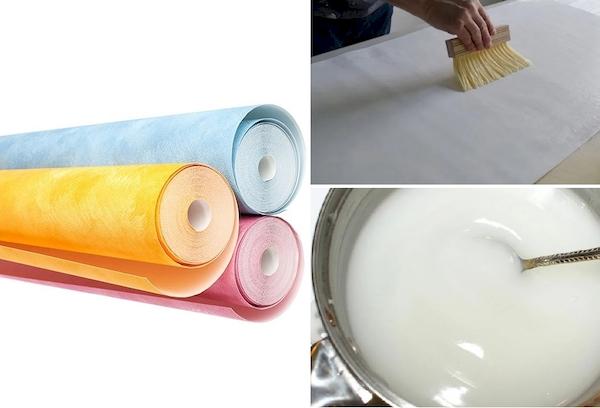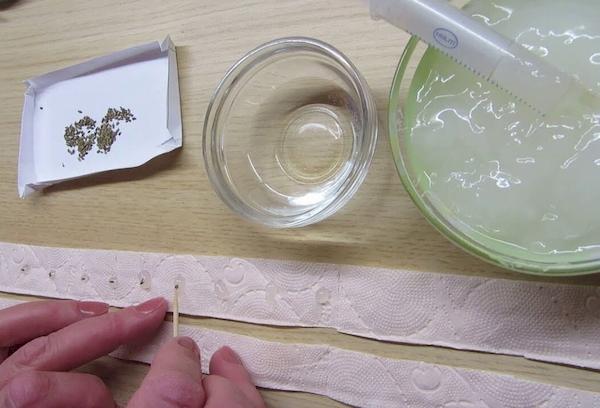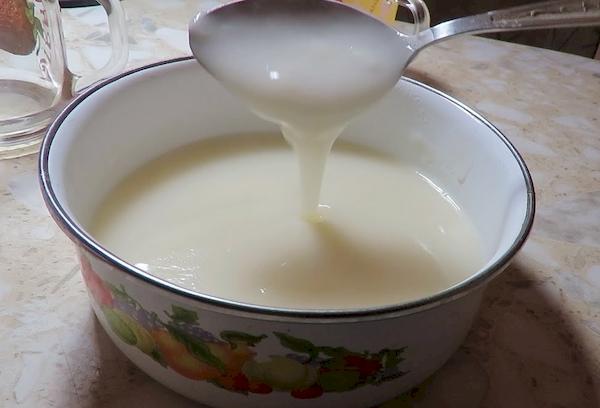How to make paste from flour for crafts, seeds and wallpaper - 5 ways
Content:
In everyday life, flour paste is often used, the recipe for which may vary. Household glue is used during repair work and for some other operations. The main component of the paste (flour) has no toxic properties, is accessible and cheap. These advantages make the use of such a composition advantageous.
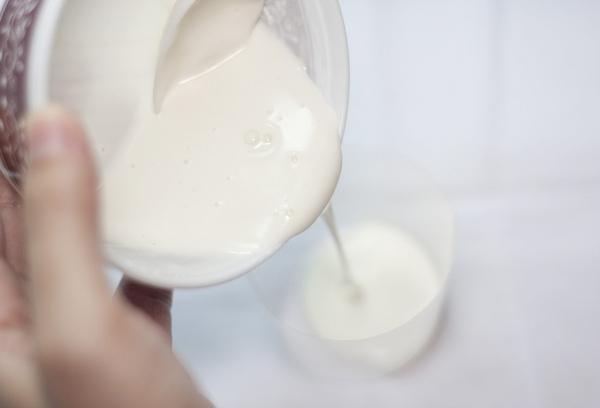
What is paste used for?
Kleister has been known to Russians since Soviet times. In an era of shortages, it was difficult to get many things, including wallpaper glue. Resourceful citizens successfully cooked a sticky mass from flour in their own kitchens, and they also used it to insulate windows for the winter.
Today, paste has still not lost its relevance. Homemade glue is suitable for gluing paper wallpaper, making crafts using the papier-mâché technique, creating appliques from threads and fabrics, and home decor. Summer residents use glue made from flour to fix seeds on paper tape; this life hack makes sowing more convenient.
What you will need
To cook paste at home, you will need ordinary tap water and baking flour.The presence of just 2 of these ingredients will allow you to prepare a composition that provides fairly strong adhesion when it comes to paper or fabric. You can do without cooking. In this case, grain or potato starch is used instead of flour.
Prepare starch paste as follows:
- 0.5 kg of starch powder is combined in a bucket with 2 liters of cold water.
- The contents of the container are thoroughly mixed.
- Then pour in another 3 liters of hot water.
In 5 minutes the paste will be ready. It can be used for gluing paper and vinyl wallpaper. The cooled mixture is filtered through cheesecloth.
You can add PVA glue to the starch paste to make it more durable. In this case, the contents of the bucket are immediately brought to a boil with constant stirring. Homemade starch glue reinforced with PVA is also used for priming walls.
Which flour is better to choose
To make a paste, you must first select flour. You can use regular coarse wheat flour, grade 2 or grade 3. This product has a higher gluten content, which means the adhesive properties will be stronger. This is especially important if you are preparing homemade wallpaper glue.
You can also use corn flour, but you need to take into account that it is more expensive, and you will need quite a lot of product for cooking the paste. In addition, corn flour is yellow in color; if the paste is not carefully applied during repairs, yellowish spots may remain on the walls.
Rye flour is more suitable for making papier-mâché. The grain product may be expired, but this will not affect the characteristics of the glue. If the flour is contaminated with larvae, it can also be used after preliminary sifting.
How to make paste from flour for wallpaper
You need to make a paste for gluing wallpaper from flour and water, observing the proportions. Experts also recommend adding certain additives to the composition depending on the density and weight of the wallpaper.
To begin, prepare a simple composition (to obtain 10 liters of paste):
- Pour 1 kg of sifted flour into a large saucepan or enamel bucket.
- Then cold water (10 l) is poured in small portions.
- During the process of combining the components, the mixture is continuously stirred so that lumps do not appear.
- After mixing the mixture until smooth, place the container on low heat.
- During the cooking process, the glue is stirred with a wooden stick or spatula.
- As soon as bubbles appear, turn off the heat.
- If a film has formed on the surface of the paste, remove it.
- After allowing the mixture to cool slightly, it is filtered through 2 layers of gauze.
Properly welded glue will have a gelatinous consistency and transparent. The whole process takes about 15 minutes. Proportions must be observed. When hot, the paste may seem liquid, but later it thickens significantly.
For light wallpaper, the paste can be brewed with a little less flour to make it liquid and easier to apply. Half a tube of PVA glue will help strengthen its adhesive ability.
For heavy non-woven or vinyl wallpaper, a composition made from corn flour with the same additive in the form of PVA is more suitable. If the wallpaper is dark in color, liquid casein glue can play the role of an additive; it is added to the cooled paste.
How to make papier-mâché flour paste
The papier-mâché technique is used to make dishes, figurines, dolls, masks, and Christmas tree decorations. The paper is soaked in water until a paste-like mass is obtained, and then the required shape is molded from it, coated with paste.Or use wet pieces of paper glued to the frame.
You can involve children in such creative activities, because the adhesive mass prepared at home is completely safe. The amount of papier-mâché glue may be small.
Preparation:
- Pour 4 tbsp into a plastic bowl. l. rye flour.
- Then add 500 ml of water little by little and mix thoroughly.
- You need to stir until the flour lumps disappear.
- After this, the mass is poured into a non-stick pan or pan with a thick bottom.
- The composition is brought to a boil over low heat while stirring.
- As soon as the paste thickens and becomes like liquid sour cream, it is removed from the stove.
After cooling, homemade glue is used to glue the paper. The work is carried out layer by layer. Paper for papier-mâché should have a low density. The adhesive composition can be stored in the refrigerator for 2 days.
How to make flour paste for seeds
Seed tape is often used to plant carrots. Such preparations greatly facilitate sowing. The seeds are not scattered by the wind and are not washed out of the soil by water. You can stick the seeds at a certain interval, the seedlings will not need to be thinned out.
Typically, summer residents use toilet paper and paste for such purposes. The paper roll is pre-cut into strips of the required width (3-4 cm).
How to prepare seed paste:
- 4 tablespoons of flour are diluted in 200 ml of warm water.
- Stir the mixture until the lumps dissolve.
- Bring 400 ml of water to a boil on the stove.
- Add boiling water to the flour mixture while stirring constantly.
- Pour the mixture into a suitable container and place on the stove.
- Cook the glue, stirring frequently.
- As soon as the paste begins to thicken, turn off the fire.
Allow the adhesive to cool to room temperature before use. Coat strips of toilet paper with the prepared paste, and then spread the seeds with a cotton swab at intervals of 4 cm. After this, the tape should dry within 24 hours. Then it can be rolled up with the seeds inside.
How to make flour paste for crafts
Craft glue is made thicker. Water and flour are mixed in a 2:1 ratio, that is, for 1 glass of water there will be 0.5 cups of flour.
The cooking process will take a little time:
- Flour is poured with cold water and stirred.
- When the lumps disappear, the mixture can be put on low heat.
- The boiling process lasts approximately 5 minutes.
- When the paste thickens, remove it from the heat, strain and cool.
This composition is suitable for working with paper and fabric. You just need to take into account that such crafts will not be waterproof.
Useful tips
In order not to spoil the paste, you should take into account some nuances associated with its preparation and storage:
- You need to cook the paste in enamel dishes or pans with a thick bottom and a non-stick coating.
- The cooking process must be accompanied by continuous stirring.
- To ensure that the mixture does not burn, it is better to keep the dishes on a metal flame spreader while heating.
- If you need strong adhesion, it is better to use the coarsest flour.
- When deciding on the thickness of homemade glue, you need to consider what type of work it will be intended for.
- After mixing flour with cold water, do not pour it into boiling water; you must do the opposite so that many lumps do not appear.
- If the paste turns out to be too thick after cooling, it can be diluted with hot water.
- Builders recommend adding a little copper sulfate to homemade adhesive intended for wallpapering - this will help protect the wallpaper from damage by bugs and mold.
- It is convenient to stir the composition until the lumps disappear using a whisk or mixer.
- You need to make the paste in such quantity that you can use it up in one go. Due to its natural composition, such glue quickly deteriorates and begins to smell unpleasant.
- You can extend the shelf life of the paste by a couple of days by adding 1-2 tbsp. l. table salt (a natural preservative).
The adhesive properties of the paste are best manifested at a temperature of +40° C, therefore, for reliable gluing, it is advisable to carry out work while the homemade flour glue has not yet cooled completely.
There are many recipes for making paste. If necessary, homemade glue can be made very thick, or, conversely, liquid. To improve the properties of the composition, you can add PVA or casein glue to it. Excess adhesive can be easily removed by blotting the drops with a dry cloth. Due to its advantages, homemade glue will remain popular in the near future.
